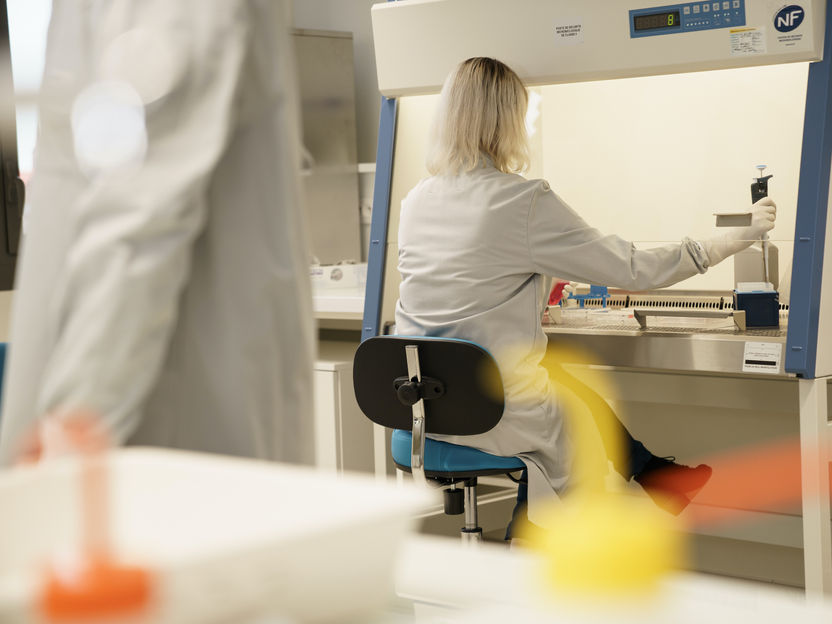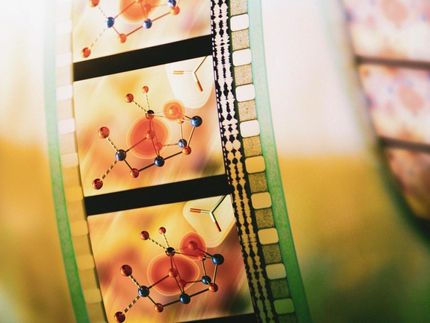More efficient biosolar cells modelled on nature
By combining light-collecting and photosynthesis proteins of different types, more energy can be produced
Potential sources of renewable energy include protein complexes that are responsible for photosynthesis. However, their efficiency in technical applications still leaves much to be desired. For example, they cannot convert green light into energy. A research team from Ruhr-Universität Bochum (RUB) and the Israel Institute of Technology in Haifa has successfully closed this so-called green gap by combining a photosynthesis protein complex with a light-collecting protein from cyanobacteria.
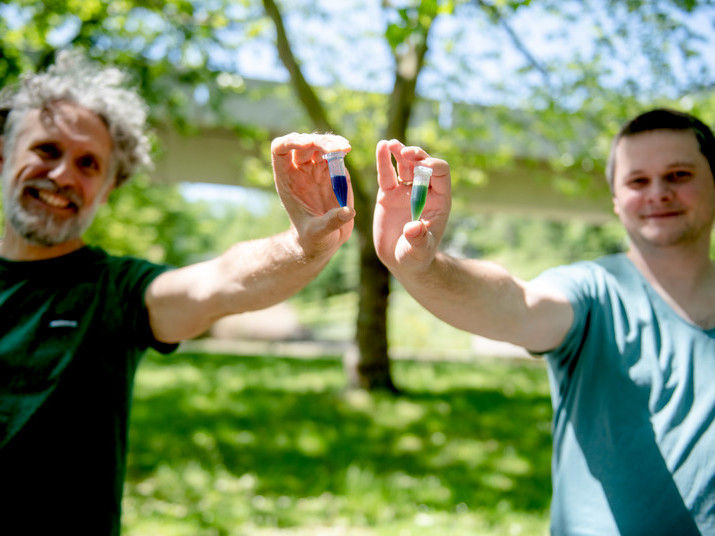
Volker Hartmann (right ) and Marc Nowaczyk have closed the green gap.
© RUB, Marquard
Imitating plants, algae and bacteria
Biosolar cells are an innovative concept for converting sunlight into electrical energy. They are manufactured using biological components from nature. At their core are so-called photosystems: large protein complexes that are responsible for energy conversion in plants, algae and cyanobacteria. Photosystem II, PSII for short, plays a central role in the process, because it can use water as an electron source for the generation of electricity.
Cooperation so far unsuccessful in the test tube
“However, as unique as PSII is, its efficiency is limited, because it can use merely a percentage of the sunlight,” explains Professor Marc Nowaczyk, Head of the Molecular Mechanisms of Photosynthesis project group at RUB. When it comes to the so-called green gap in particular, PSII is almost inactive. “Cyanobacteria have solved the problem by forming special light-collecting proteins, i.e. phycobilisomes, which also make use of this light. This cooperation works in nature, but not yet in the test tube.”
Super complexes use twice as many photons of the green gap
In collaboration with the research group of Professor Wolfgang Schuhmann at RUB and the Israeli research group of Professor Noam Adir, Nowaczyk’s team has succeeded in producing a two-component bioelectrode. The main difficulty was the functional interaction of the multiprotein complexes, some of which were combined across species.
The researchers stabilised these super complexes using short-chain chemical crosslinkers that permanently fix the proteins at a very short distance from each other. In the next step, they inserted them into appropriate electrode structures. “We mastered this challenge by using customised, three-dimensional and transparent electrodes in combination with redox-active hydrogels,” says Dr. Volker Hartmann, lead author of the study. This design enabled the researchers to use twice as many photons within the green gap, compared to a system without any light collection complexes.
Promising interim stage
The assembly of protein complexes in the test tube is considered a promising interim stage in the development of biological solar cells. The advantages of different species can thus be functionally combined in semi-artificial systems. In future, the researchers will be mainly focusing on optimising the production and life span of the biological components.
Original publication
Volker Hartmann, Dvir Harris, Tim Bobrowski, Adrian Ruff, Anna Frank, Thomas Günther-Pomorski, Matthias Roegner, Wolfgang Schuhmann, Noam Adir, Marc M. Nowaczyk; "Improved quantum efficiency in an engineered light harvesting/photosystem II super-complex for high current density biophotoanodes"; Journal of Materials Chemistry A, 2020
Original publication
Volker Hartmann, Dvir Harris, Tim Bobrowski, Adrian Ruff, Anna Frank, Thomas Günther-Pomorski, Matthias Roegner, Wolfgang Schuhmann, Noam Adir, Marc M. Nowaczyk; "Improved quantum efficiency in an engineered light harvesting/photosystem II super-complex for high current density biophotoanodes"; Journal of Materials Chemistry A, 2020
Topics
Organizations
Other news from the department science

Get the life science industry in your inbox
By submitting this form you agree that LUMITOS AG will send you the newsletter(s) selected above by email. Your data will not be passed on to third parties. Your data will be stored and processed in accordance with our data protection regulations. LUMITOS may contact you by email for the purpose of advertising or market and opinion surveys. You can revoke your consent at any time without giving reasons to LUMITOS AG, Ernst-Augustin-Str. 2, 12489 Berlin, Germany or by e-mail at revoke@lumitos.com with effect for the future. In addition, each email contains a link to unsubscribe from the corresponding newsletter.
More news from our other portals
Last viewed contents
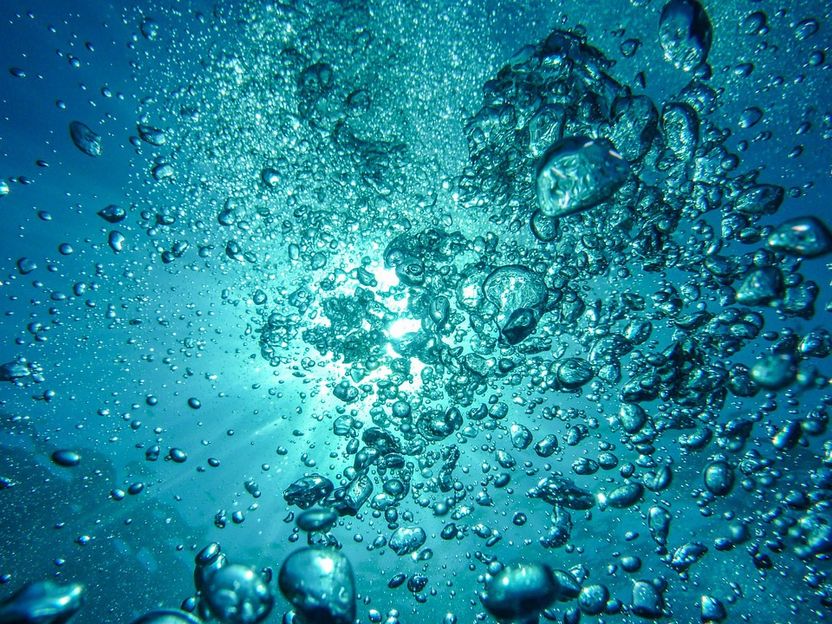
Artificial enzymes convert solar energy into hydrogen gas
A vaccine alternative protects mice against malaria - Vectored immunoprophylaxis injection triggers creation of antibodies that prevent malaria in 70 percent of mice

KU Leuven spin-off AstriVax raises € 30 million to build vaccine platform - AstriVax to develop novel vaccines that are easy to produce, have reduced cold chain requirements, and offer broad and long-lasting protection
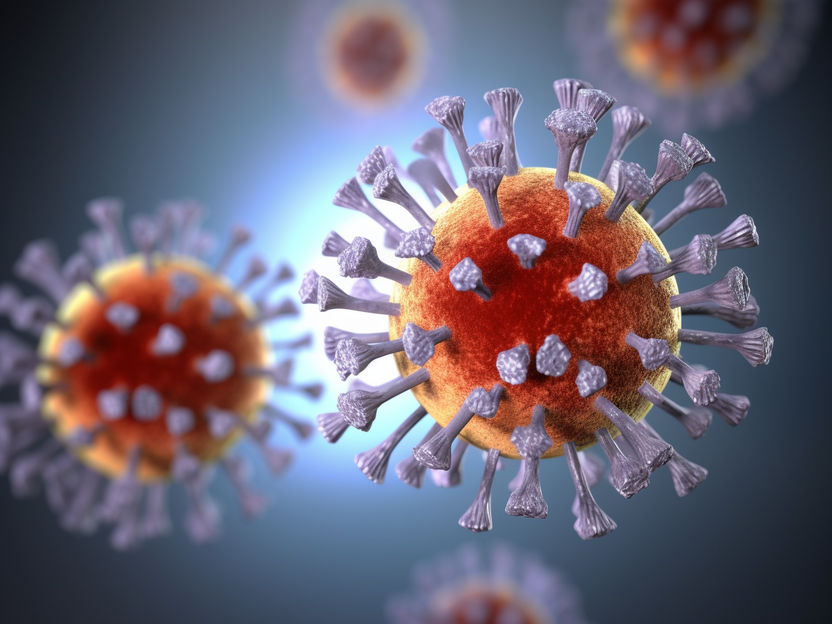
Occludin protein plays key role in spread of coronavirus throughout body’s cells - Finding gives insight into how the virus spreads throughout the human body, may help development of antiviral drugs
Merck strengthens biorefineries of the future
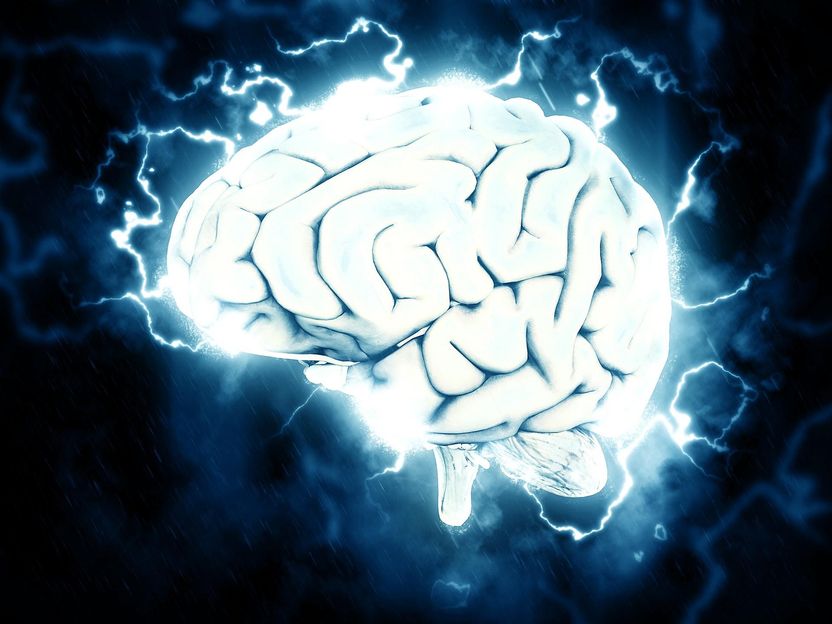
More Brain Lesions in Senior Women than in Men of the Same Age - The Extent of Abnormalities in the Brain’s White Matter Grows Significantly After Menopause

Gene found to be crucial for formation of certain brain circuitry - Identified using new technique that can speed identification of genes, drug candidates
Affibody and Agilent Technologies to Develop Robust Protein Sample
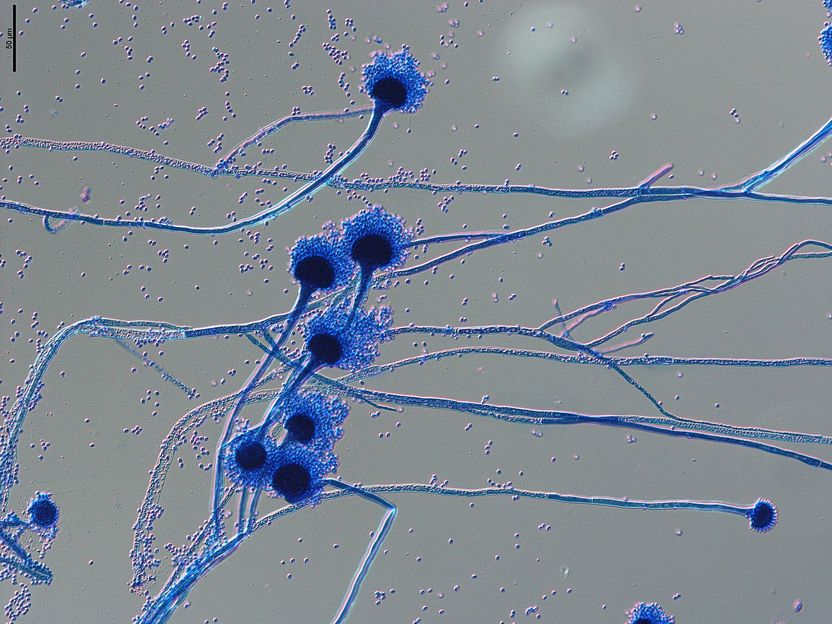
The pangenome - key to new therapies - Genetic diversity opens up new ways to treat life-threatening diseases
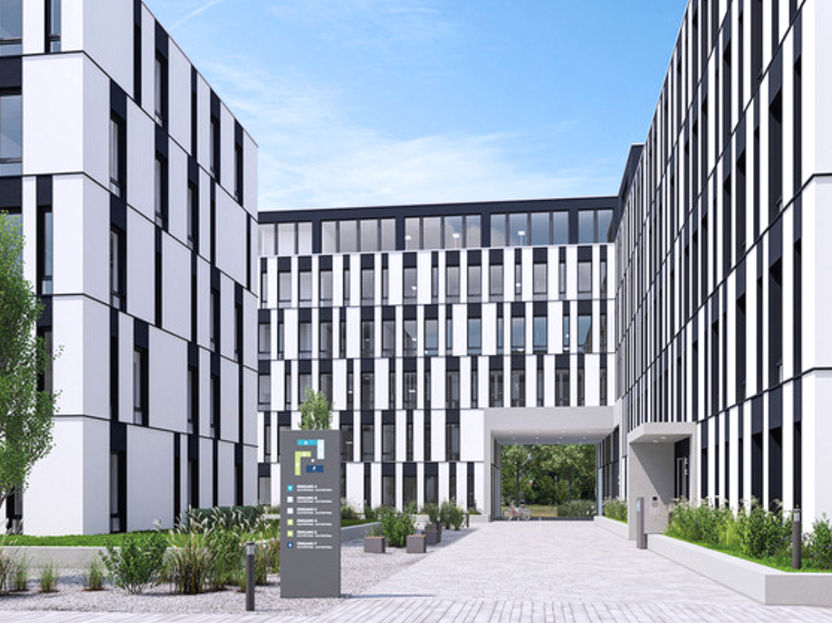
New base at the heart of science and industry - LUMITOS AG now calls Germany's largest science and technology park in Berlin-Adlershof its home
